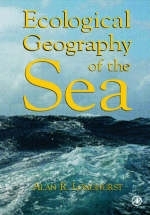
Ecological Geography of the Sea
Academic Press Inc (Verlag)
978-0-12-455559-4 (ISBN)
- Titel erscheint in neuer Auflage
- Artikel merken
This book presents an in-depth discussion of the biological and ecological geography of the oceans. It synthesizes locally restricted studies of the ocean to generate a global geography for the vast marine world. "Ecological Geography of the Sea" is the first comprehensive attempt to divide the ocean into distinguishable regions that permit detailed comparisons. Based on patterns of algal ecology, the book divides the ocean into four primary compartments, which are then subdivided into secondary compartments. The secondary compartments are identified and characterized by biogeochemical features including nutrient dynamics, continental shelf topography, and algal blooms. Because ocean-wide regional classification has broad impact on the way oceanographers and ecologists study ocean patterns, this book will have wide and long-term appeal. It divides the ocean into distinguishable regions that permit detailed comparisons and synthesizes locally restricted studies of the ocean to generate a global geography for the vast marine world. It appeals to a wide cross-section of marine biologists interested in the geography of the oceans.
After 4 years of war service and after graduating from the University of London in 1952, Alan Longhurst subsequently studied the ecology of benthic communities and demersal fish off tropical West Africa and New Zealand, and the ecology of oceanic zooplankton in the eastern tropical Pacific, the north Atlantic and the arctic archipelago of Canada. He has held both research and administrative posts in several laboratories and has had many less formal occupations, such as coordinating the EASTROPAC surveys or acting as Secretary, SCOR. He has published widely in the field of benthic and pelagic ecology, and concerning the ecological basis of fisheries. He is now retired and spends much of year in SW France, where he assists his wife in running a gallery of contemporary art, keeping a sharp eye out for oceanographers among their clients.
Preface. Introduction: The Inadequacy of Classical Biogeography in Ecological Analysis. The New Availability of Timely, Global Oceanographic Data. The Use of CZCS Images in This Study. The Choice of Schemes to Partition the Pelagic Ecology of the Oceans. Ecological Gradients: Fronts and the Pycnocline: Oceanic and Shelf Sea Fronts Are Ecotones and Leaky. The Ubiquitous Horizontal "Front" at Shallow Pycnocline. Biogeography of the Shallow Pycnocline: Both Habitat and Boundary. Physical Forcing of Biological Processes: Minimal Set of Predictive Factors for Ecology of the Pelagos. What Do We Really Mean by an Algal Bloom? Can We Specify Major Biomes in the Pelagos? Stratification and Mixing in the Open Ocean: The Consequence of Latitude. Regional Discontinuities in Resistance to Vertical Mixing in the Warm Oceans. The Limits of the Characteristic Conditions of Polar Seas. The Seaward Boundary of Processes along Ocean Margins. Conclusion: there Are Four Primary Biomes in the Ocean. Biomes: Primary Compartments in Ecological Oceanography: A Definition of the Primary Biomes. Polar Biome. Westerlies Biome. Trades Biome. Coastal Boundary Zone Biome. Exceptional Regions: Boundary Layers and the High-Nutrient, Low-Chlorophyll Areas. Oceans, Seas and Provinces: The Secondary Compartments: How to Group the Major Oceans, the Marginal Seas and Coastal Regions. A Method for Specifying Ecological Provinces in the Oceans. A Statistical Test of the Proposed Boundaries. Temporal Variability and the Adjustment of Boundaries: Scales of External Forcing: From Seasons to Centuries. Linking Seasonal to ENSO-Scale Events. Longer Scale Trends and Changes. Conclusion: A Map of Provinces for a Strong ENSO Event? The Atlantic Ocean: Atlantic Polar Biome. Atlantic Westerly Winds Biome. Atlantic Trade Wind Biome. Atlantic Coastal Biome. The Indian Ocean: Indian Ocean Trade Wind Biome. Indian Ocean Coastal Biome. The Pacific Ocean: Pacific Polar Biome. Pacific Westerly Winds Biome. Pacific Trade Wind Biome. Pacific Coastal Biome. The Southern Ocean: Antarctic Westerly Winds Biome. Antarctic Polar Biome. Bibliography. Index.
| Erscheint lt. Verlag | 19.4.2001 |
|---|---|
| Verlagsort | San Diego |
| Sprache | englisch |
| Maße | 152 x 254 mm |
| Gewicht | 886 g |
| Themenwelt | Naturwissenschaften ► Biologie ► Ökologie / Naturschutz |
| Naturwissenschaften ► Geowissenschaften ► Hydrologie / Ozeanografie | |
| ISBN-10 | 0-12-455559-4 / 0124555594 |
| ISBN-13 | 978-0-12-455559-4 / 9780124555594 |
| Zustand | Neuware |
| Haben Sie eine Frage zum Produkt? |
aus dem Bereich



